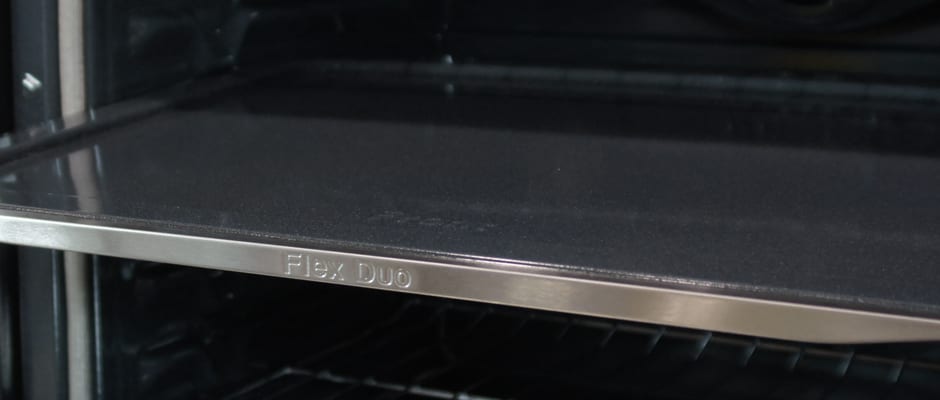Pros
Cons
Introduction
{{product.brand.name}} has voided the mutual exclusivity of those choices with the Flex Duo system, which allows one to split the oven with a ceramic divider to create two separately controllable cooking cavities, complete with their own convection fans. Besides the titular feature, this oven sports a litany of other features in its arsenal, which range from useful to simply... well, present.
Fortunately, the vast amount of features don't require the sacrifice of performance, which varied from solid to excellent throughout the various criteria we tested in the oven and on the rangetop. The only Achilles heels we found were the less-than-stellar broiler and over-powered front left burner. But it's hard to imagine these things as dealbreakers.
If you've hit midlife and are looking for a convertible, few convertibles will heat things up faster than this one. And let's face it: this is far more practical and economical than a Porsche.
Design Overview
{{section_header}}{{section.name}}{{/section_header}}
The {{product.name}} is a unique beast: a single oven that can maintain two distinct temperatures. The trick is a lightweight divider that bisects the oven cavity, and stores in a slot above the warming drawer when not in use. Other than that, it's a traditional-looking upscale 30" freestanding range with rear controls (ugh) and stainless trim alongside black porcelain enamel.
Front
{{section_header}}{{section.name}}{{/section_header}}
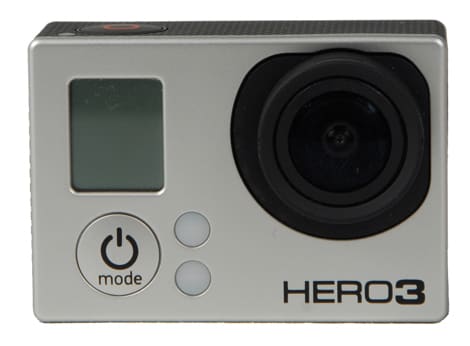
Range-top
{{section_header}}{{section.name}}{{/section_header}}
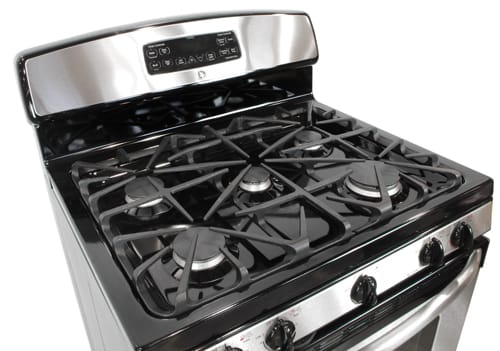
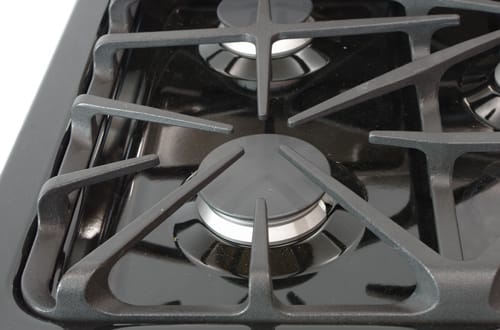
Upper Oven
{{section_header}}{{section.name}}{{/section_header}}
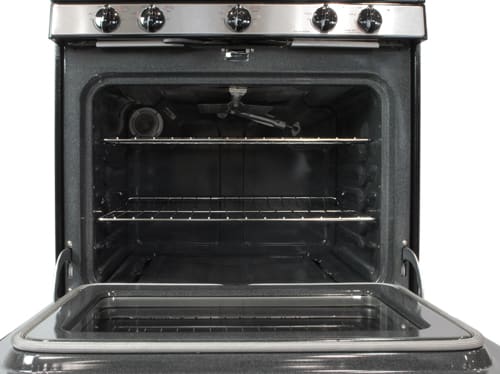
Lower Oven
{{section_header}}{{section.name}}{{/section_header}}

Broiler
{{section_header}}{{section.name}}{{/section_header}}
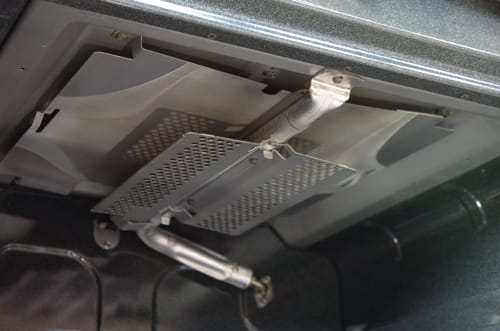
Warming Drawer
{{section_header}}{{section.name}}{{/section_header}}
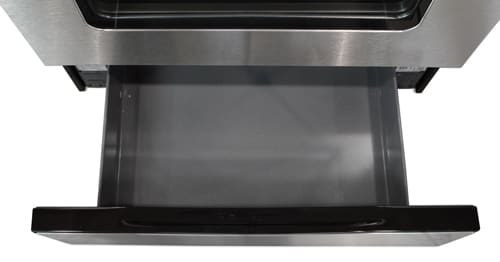
Cooking Performance
The {{product.name}} managed to quickly heat up to very consistent operating temperatures, although the oven often overshot the preheat before settling in. The rangetop's boiling abilities impressed us additionally, perhaps even too much, as two of the burners on high deliver temperatures a little too hot for our taste. Unfortunately, the broiler did not perform as well as the rest, taking its time to heat up.
{{photo_gallery "Primary Oven Keep-Warm Ramp-up", "Primary Oven 350F Ramp-up", "Primary Oven Max Ramp-up", "Secondary Oven Convection Ramp-up", "Oven Temperature Variance", "Range-top Water Boil", "Range-top Temperature Range"}}
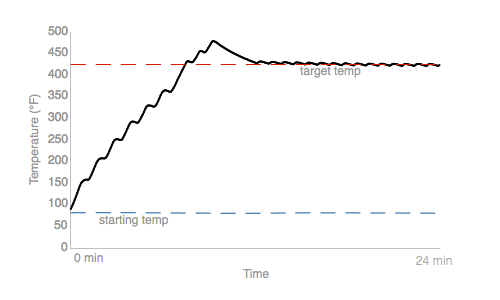
This is the upper divided cavity. After overshooting 425°F, it is ridiculously even.
Range Performance Overall
{{section_header}}{{section.name}}{{/section_header}}
{{product.brand.name}} put two solid power burners into the {{product.model}}, both able to boil water quickly. In spite of the advantages of a gas cooktop, all three burners are capable of temperatures cooler than almost everything we've seen. The extreme temperature of the front left burner left us very impressed but a bit scared, so we are absolutely positive that this can and will sear, burn, and char.


Water Boiling
{{section_header}}{{section.name}}{{/section_header}}
The front right triple-element power burners boiled very quickly, rolling six cups of water in four minutes thirty-eight seconds--the same time it takes to listen to Misty Mountain Hop. If you're in the mood for Mozart, the front left dual-element burner will be boiling when you finish the seven and a half minutes Molto Allegro. The back burners are back burners, and should be used accordingly. But if you must use them to boil, you'll be pleased to know it'll only take twelve minutes. Still, faster than Frampton.
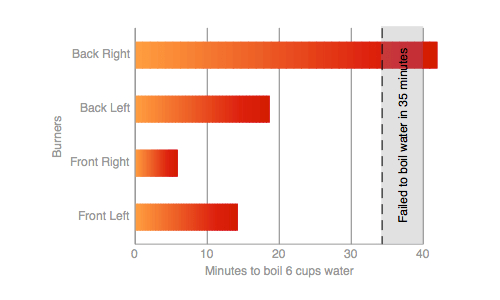
Don't try to boil with the back right simmer burner.
Low Temperature Cooking
{{section_header}}{{section.name}}{{/section_header}}
While the burners sure do run hot, this thing can simmer down when it needs to, with two burners delivering temperatures as low as 106°F, and the coolest at 101°F. The fourth didn't do so hot either, showing us a very respectable 121°F. These excellent simmering temperatures often come in handy for keeping things warm, melting chocolate or butter without a double boiler, or simmering small quantities.
Range-top Temperature Range
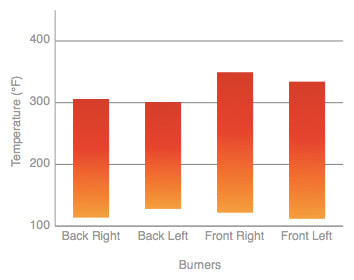
Maximum and minimum heat settings for each burner: The hottest burner reaches about 400F.
High Temperature Cooking
{{section_header}}{{section.name}}{{/section_header}}
The {{product.name}} has a bit of a temper, having two burners that can run a bit too hot. The front left burner managed to heat our sensor to 823°F, a hellish temperature far too hot for safe use. This is far enough above the flash points of kitchen oils that it approaches their autoignition temperatures. A piece of pine will spontaneously ignite above 800°F. Operate with care and consider locking out the upper ends of both left burners. The right burners, while cooler and safer to use, are plenty hot enough to sear and brown. Fortunately this means that this range doesn't have to work hard at all on medium settings, like a Ferrari going the speed limit.
Overall Oven Performance
{{section_header}}{{section.name}}{{/section_header}}
Sure the range top performed quite respectably in our tests, but {{product.brand.name}} clearly put their focus into the oven. The first thing that stands out is the speed this oven can preheat: three minutes to 170°F, eight minutes to 350°F, and thirteen and a half to 500°F. While this may be less of a performance factor, and more of a convenience one, this shows the oven gets it done. Throughout its range of temperatures, this oven stays close to its the target temperature after reaching it.
{{product.manufacturer_specs['Primary Oven Photo']}}{{photo_gallery "Primary Oven 350F Ramp-up", "Primary Oven Keep-Warm Ramp-up", "Primary Oven Max Ramp-up"}}
Target Temperature Accuracy
{{section_header}}{{section.name}}{{/section_header}}
We often see many ovens with a "keep warm" setting of 200°F, even though we expect the "keep warm" temperature setting on an oven to be around 170°F. The Flex Duo concurred with our definitions of warm--too hot for bacterial growth, but not so hot it continues cooking significantly. On the upper end of this oven's capabilities, this oven averaged 535°F, though it was set to 550°F.
Temperature Fluctuation
{{section_header}}{{section.name}}{{/section_header}}
We measure the temperature consistency with strategically placed sensors throughout the oven. A tight grouping of temperatures around the set target over time means even cooking. High temperature variance results in things that are charred on the outside and raw on the inside. The {{product.name}} scored quite well in our tests, making sure that you can't have both a rare and well-done piece of meat at the same time, as it is able to maintain a consistent climate at all temperatures.
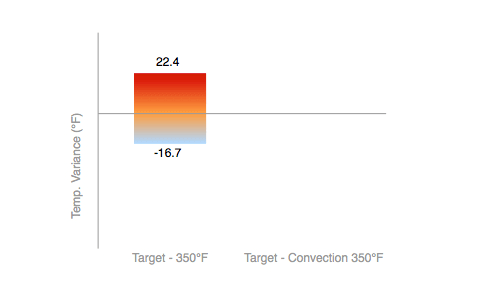
Oven "Margin of Error" in Temperature Variance: The oven is consistent at cool and mid-level temperatures, but inconsistent when operating at its warmest.
Secondary Oven Performance
{{section_header}}{{section.name}}{{/section_header}}
The {{product.name}} Flex Duo gets its name from the ceramic plate that divides the single oven cavity into two separate chambers. Each one has its own convection fan and can be independently controlled, allowing three options for size. Only one of these cavities has a heated convection fan, but both circulate hot air in the same way. Heating the lower cavity to 350°F took just over seven minutes, faster than heating up the entire oven. For baking smaller things, this seems like a good proposition, allowing for shorter preheat times with less oven to heat. Preheating the top cavity to 425°F took just nine minutes, so this seems like a potentially useful and time-saving feature. Unfortunately, accessing one cavity requires opening the door to both, but this seems a small disadvantage to the option. Both cavities performed well, displayed unbelievably consistent temperatures, albeit after overshooting the preheat.

This is the upper divided cavity. After overshooting 425°F, it is ridiculously even.
Broiler Performance
{{section_header}}{{section.name}}{{/section_header}}
It may seem like {{product.brand.name}} neglected the {{product.model}}'s broiler, which perhaps they did. It took over fifteen minutes to reach 544°F-- a temperature most ovens can hit in a third of the preheat time. But while it seems amateurish in comparison to the rest, it isn't so terrible. Most people don't need to operate their oven over 550°F--and shouldn't--so this is not a dealbreaker.

Broiler Features
{{section_header}}{{section.name}}{{/section_header}}
This broiler, meant to be operated with the door cracked open, has two settings, "LO" and "HI." The manual instructs the user when to use each setting, although it provides little insight to exactly how hot "LO" is supposed to be. As stated above, we got the "HI" setting up to 544°F after fifteen minutes. Although we recommend consulting the interweb and the manual when broiling, our sense of prudence reminds us that nothing can replace close monitoring of the broiled food if unfamiliar with the oven's operation.
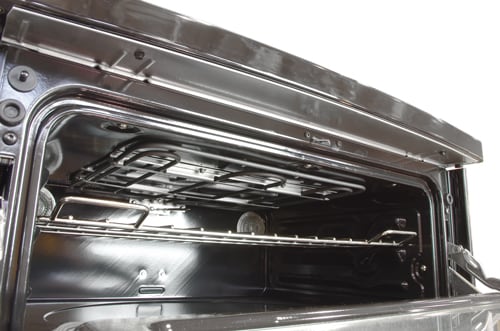
Overall Efficiency
{{section_header}}{{section.name}}{{/section_header}}
The {{product.name}}'s burners draw a combined total of 8,306 watts, decently close to the manufacturer's stated 8400. Of course, this oven would only draw this amount of power if every burner was on high. The combined power draw of the oven elements--not including the broiler--reached 7,396 watts, close to the stated 7,300. The efficiency of power usage relative to performance indicated that the {{product.name}} used its energy well.
Range Efficiency
{{section_header}}{{section.name}}{{/section_header}}
The two front power burners drew 2,940 and 2,979 watts in our tests, and the rear burners drew 1205 and 1182. When comparing these numbers to their performance, they seem to be very efficient indeed.
Oven Efficiency
{{section_header}}{{section.name}}{{/section_header}}
The convection element drew 4318 watts, resulting in total of 7396 watts when combined with the main oven element. Like all ovens the {{product.name}} draws a good amount of power, as reaching baking temperatures requires electrical energy to get the thermal energy to cook your food.
Features
{{section_header}}{{section.name}}{{/section_header}}
The ceramic range sports four main burners and a 100W warming zone. The two front power burners have multiple elements accommodating different sized pots, with the left having a two and the right having three elements. Toward the middle of the cooktop, the 100W warming zone provides easy-bake power and temperature to food before serving.

The Duo Flex divider allows for the {{product.name}} to be used as either a full-height single oven or a double oven that's capable of holding two separate temperatures. The Duo Flex divider slides in about two thirds of the way up the oven, clicking into place and triggering the control panel so that it's ready for a double oven.
Besides the convertible nature of the {{product.name}}, the oven has some other features that--while less useful--are just as unusual. The control panel has an "Easy Cook" feature, which allows the user to choose from the preset options of pizza, casserole, chicken nuggets, and cake. Besides being slightly offensive to American cuisine, these do not appear to be particularly useful, especially when most of these recipes call for a single oven temperature. Besides the "Easy Cook" options, there are "Custom Cook" options that allow the user to save temperature settings. The three racks and seven rack settings allow for exceptional flexibility in conjunction with the Flex Duo divider, and with the various convection settings delivering even heat around the oven, the need to swap racks to prevent overcooking may be minimized.
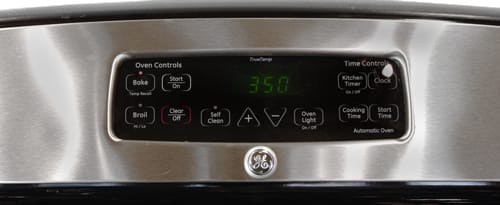
Interestingly, the time will only display in-24 hour "military" time, so you can let the kids know their pizza will be ready at zero two hundred hours. Otherwise, the timer, delay start and time bake options are quite easy to use. Press the "Timer" button once for a countdown in hours and minutes, twice for seconds. Enter the time, and press it a third time to start the clock.
{{product.manufacturer_specs['Timer Photo']}}
Controls
{{section_header}}{{section.name}}{{/section_header}}
Range controls are on the top rear of the unit, so you'll have to potentially reach over some pretty hot items to turn the knobs. Once you've met that challenge, you'll find metal knobs that are quite easy to turn. For burners with multiple elements inside of them, the controls are subdivided to control each element. It's quite intuitive -- the further you turn it, the more elements will turn on and the hotter the burner will get.
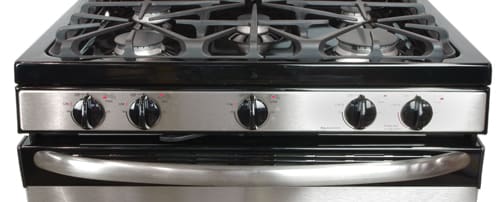
Oven controls are on a flat touchpad with an extremely bright blue display. To bake or use convection, press the key for the function you want and enter in the temperature on the numeric keypad. The numbers aren't in a telephone style format, so you may hit the wrong button -- but just press "Cancel" to undo your mistake.
Slide the Duo Flex divider into the oven cavity and the control panel will beep, letting you know it's now configured to work as a double oven. You'll have to select "upper" or "lower" before setting the temperature.
As for the "Easy Cook" options, Samsung sure must have a low estimation of the average American consumer. According to the presets, all we eat is pizza, casseroles, chicken nuggets and cake. I'm sure it adds convenience for some users, but we'd rather not be reminded of the existence of chicken nuggets when we're actually cooking.

Some other ovens force you to choose between just low and high, but not the {{product.name}}. The broiler operates much the same way as the oven: Press the broil button and enter a specific temperature.
{{product.manufacturer_specs['Broiler Controls Photo']}}
Cleaning
Conclusion
{{product.vanity}}
The {{product.name}} could very well seem like a gimmick, marketing itself as an cooking instrument of compromise between dual oven and single oven systems. In many cases, something this ambitious might have resulted in that corollary that often follows multifunction products of compromise: jack of all trades, master of none.
In this case, the Flex Duo breaks that paradigm. As a single oven, with the divider safely secured in the storage/warming drawer, the {{product.model}} shows incredible temperature consistency in addition to the fast preheat. With the divider in place, the smaller cavities heat up even more quickly, and we found the temperature regulation quite impressive. There are no compromises in the oven.
The range, while less praiseworthy, performed well in our tests, quickly boiling water on all of its burners, even the back burners designed more for simmering. The power of the front left burner did leave us a little nervous, but regardless of how excessive the temperature might be, no one should be leaving a stove unattended.
Besides the overloaded front burner, we only found a few pockmarks on this machine's report card. When the oven preheats, it often blows past its target temperature and past the normal upper bound of variance. So while the preheat times are short, it might be a good idea to let the oven simmer down for a minute or two longer to let it get into its rhythm. Additionally, if you're someone who frequently uses the broiler and expects a lot from the oven's hottest element, this may disappoint. While the it's probably good enough for most people's needs, its slow heat-up times might make you think twice.
In spite of these hiccups, we recommend this oven as a fine compromise for people who want the flexibility of size and multiple ovens, without sacrificing performance. If it's in your price range, we expect it to satisfy.
Meet the tester
Ethan writes reviews and articles about science for Reviewed.com, and edits the Science Blog. He's originally from Vermont and thinks the bicycle and guitar are examples of perfected technology. Prior to Reviewed.com, he studied furiously at Middlebury College.
Checking our work.
Our team is here to help you buy the best stuff and love what you own. Our writers, editors, and experts obsess over the products we cover to make sure you're confident and satisfied. Have a different opinion about something we recommend? Email us and we'll compare notes.
Shoot us an email

